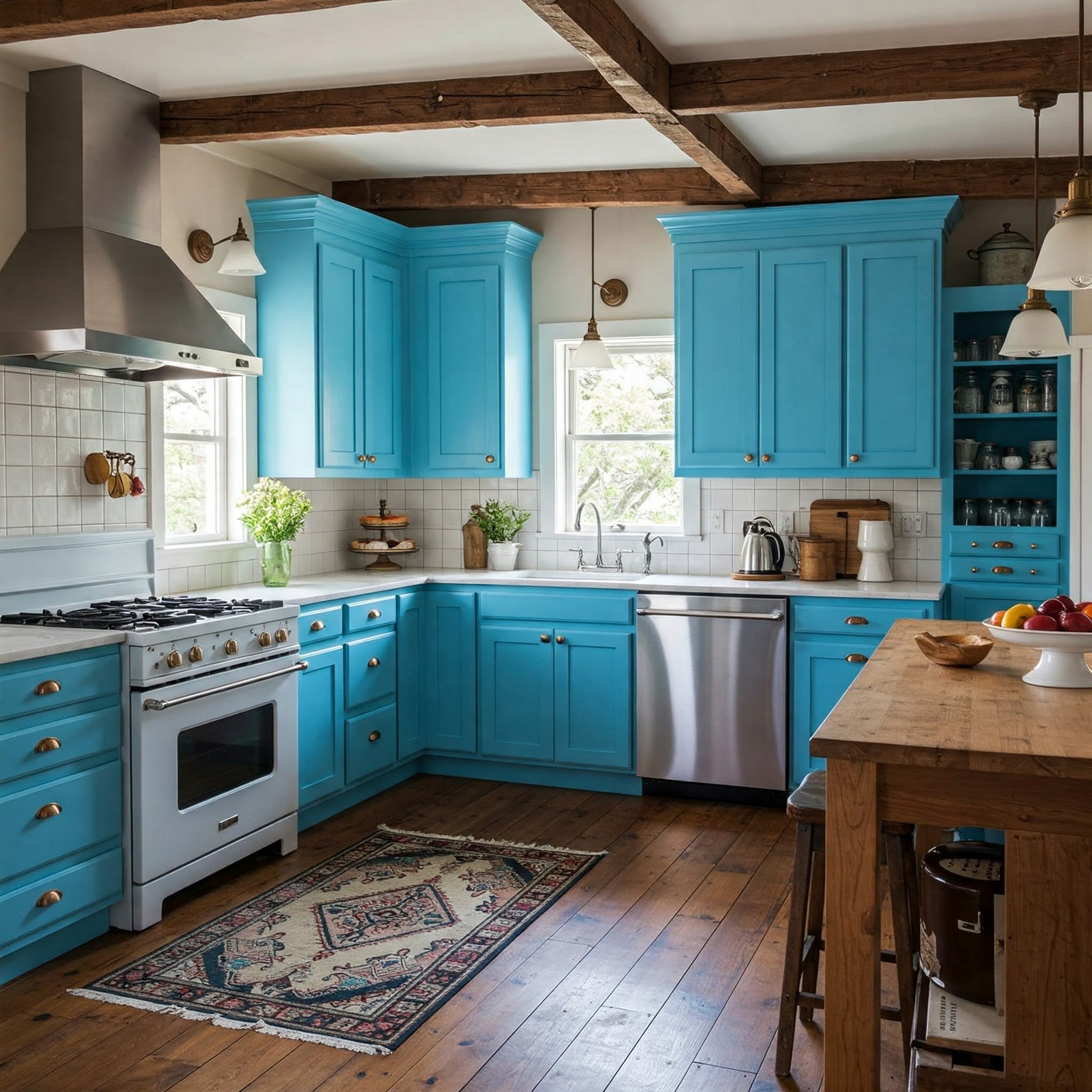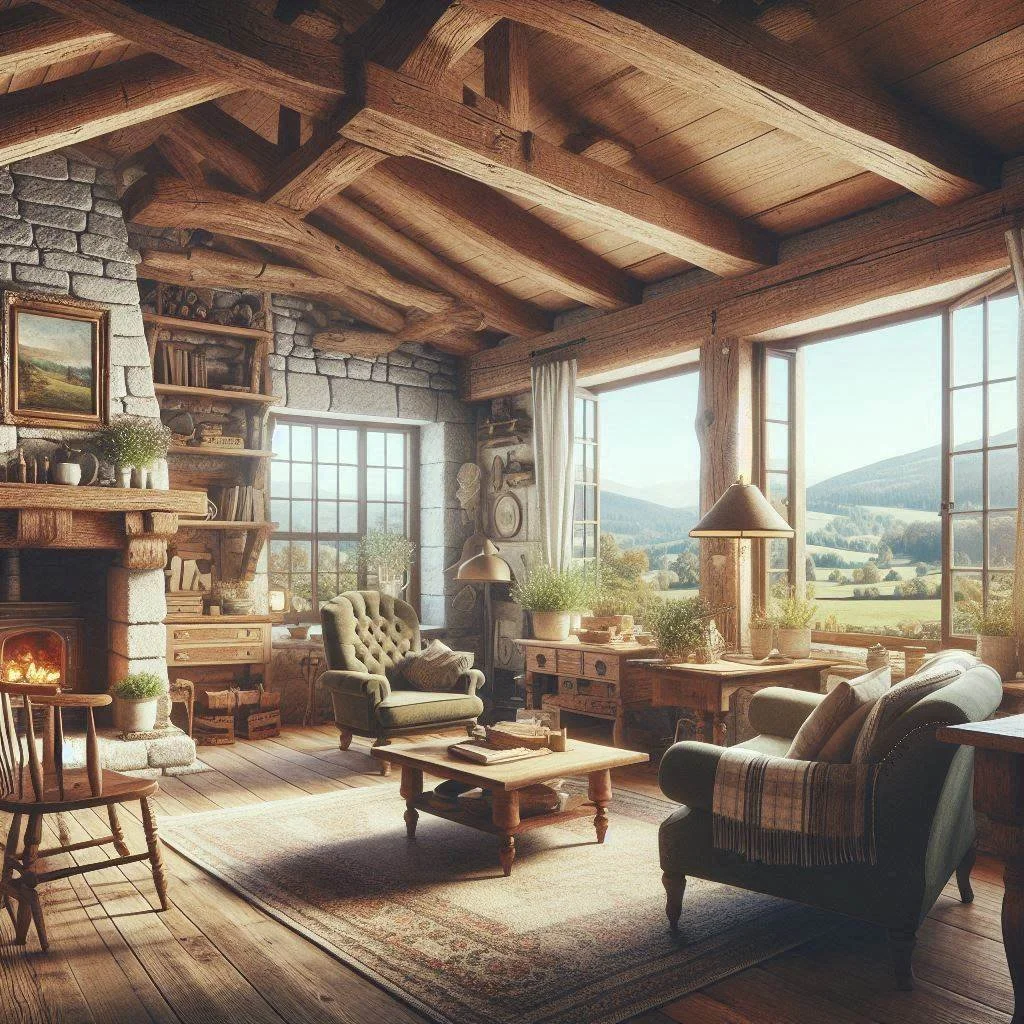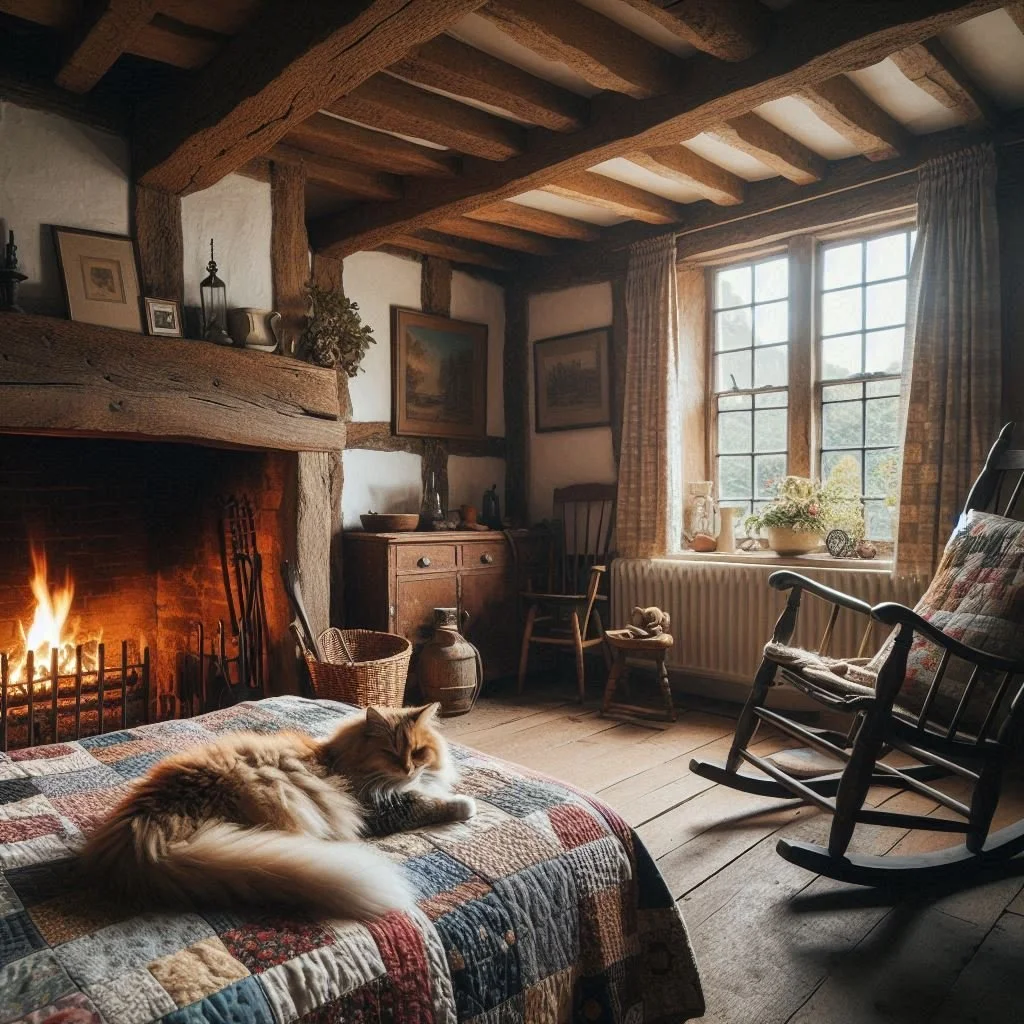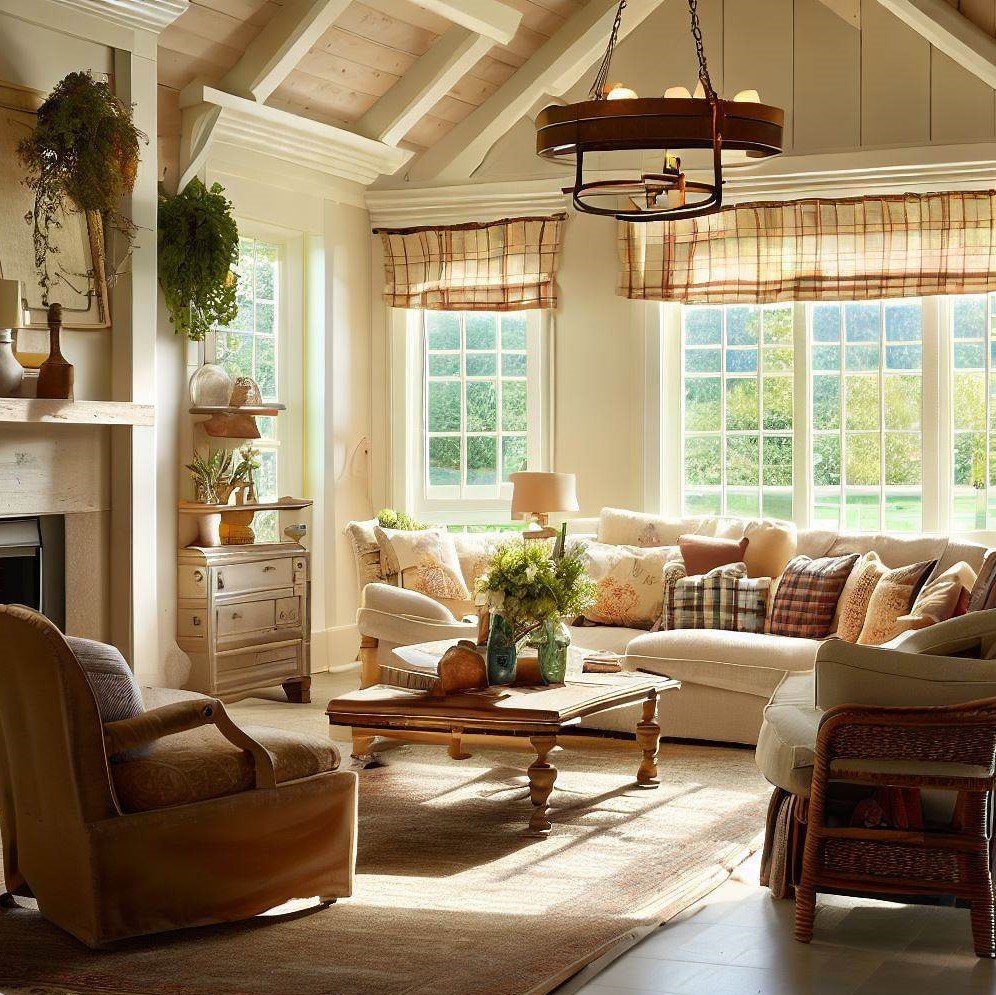15 Contemporary Farmhouse Dining Room Ideas to Love
Discover 15 stunning contemporary farmhouse dining room ideas that marry rustic charm with modern elegance—perfect for creating a welcoming space for family meals.
Remember those Sunday family dinners at Grandma's farmhouse? The warmth, the laughter, the sense of belonging around a sturdy wooden table that had witnessed generations of stories. Today's contemporary farmhouse style captures that same heartfelt hospitality but infuses it with clean lines and modern sensibilities that speak to our current lives. It's like finding your favorite childhood comfort food reimagined by a gourmet chef—still soul-satisfying but with unexpected, sophisticated twists. The dining room, as the heart of family gatherings and the stage for both everyday meals and special celebrations, deserves this thoughtful blend of past and present. Whether you live in an actual converted barn or a suburban home yearning for character, these fifteen contemporary farmhouse dining room ideas will help you create a space that honors traditional values while embracing fresh design perspectives. I've curated approaches that balance rustic elements with refined touches, creating dining rooms that feel both grounded in history and perfectly suited to modern living. Ready to create a dining space that welcomes family and friends with both nostalgic comfort and contemporary style? Let's explore how the farmhouse aesthetic has evolved into something both timeless and timely.
1. Statement Chandelier with Industrial Elements
Transform your dining room's entire energy with a chandelier that marries industrial edge with farmhouse warmth—like finding the perfect vintage tractor part repurposed into something unexpectedly elegant. This overhead focal point immediately elevates your space beyond predictable farmhouse tropes while still honoring the style's appreciation for authenticity and craftsmanship. I'm particularly drawn to fixtures that combine black metal frameworks with warm wood elements or clear glass globes that showcase modern Edison bulbs. The substantial scale works wonderfully with farmhouse dining rooms, which typically feature higher ceilings that can handle visual weight. What makes this approach particularly successful is how it creates immediate architectural interest even in builder-grade spaces, literally drawing the eye upward and creating a sense of designed intention. The mix of materials—typically metal, wood, and glass—perfectly encapsulates the contemporary farmhouse balance of rustic and refined.
2. Mixed Seating with Bench and Chair Combinations
Create dynamic visual interest while maximizing flexibility by combining a dining bench with individual chairs—like hosting a dinner where both the outgoing storytellers and the quiet observers find their perfect spots. This seating strategy introduces asymmetry that feels both intentional and invitingly casual. I recommend placing the bench along one long side of a rectangular table, allowing the opposite side and ends to showcase individual chairs that can either match or thoughtfully contrast. The bench references farmhouse functionality and casual communal dining, while carefully selected chairs can introduce more sophisticated design elements. What makes this approach particularly versatile is how it accommodates varying group sizes with ease—children can squeeze together on a bench while adults enjoy the support of proper chairs. The combination also creates natural visual rhythm through the alternation of different seating heights and forms.
3. Two-Tone Table for Dimension and Character
Anchor your dining space with a two-tone table that showcases deliberate design rather than weathered happenstance—like finding the perfect balance between your grandmother's antique farmhouse table and a sleek contemporary piece. This modern take on farmhouse furniture maintains the substantial presence traditional farm tables are known for while introducing sophisticated color contrast that feels intentionally designed. I've found the most successful combinations typically feature natural wood tops paired with painted bases in white, black, or muted colors that complement your overall palette. The contrast immediately creates visual interest even before you add place settings or centerpieces. What makes this approach particularly effective is how it bridges rustic and refined elements in a single piece, establishing the contemporary farmhouse balance at the center of your dining space. The two-tone treatment also helps integrate the table with other elements in your room, connecting with both wood tones and painted finishes.
4. Shiplap Accent Wall for Architectural Interest
Create instant character with a shiplap accent wall that adds texture without overwhelming your space—like giving your dining room a subtle backstory rather than forcing it to wear a costume. This architectural element immediately communicates farmhouse style while its clean lines maintain a contemporary feel. I recommend limiting shiplap to a single wall, perhaps behind a buffet or as a backdrop to your dining table, rather than applying it throughout the entire room. Painted white, it creates a bright, textured surface that catches light beautifully; in darker colors, it adds dramatic depth while still providing textural interest. What makes this approach particularly successful in contemporary farmhouse design is how it references traditional materials while implementing them in a clearly intentional, designed manner. The horizontal lines naturally expand your space visually, while the subtle shadows between boards add dimension that flat paint alone cannot achieve.
5. Modern Windsor Chairs for Updated Tradition
Surround your table with Windsor chairs that have undergone a contemporary makeover—like meeting the updated version of an old friend who has maintained their essential character while embracing current trends. These iconic farmhouse seating options have evolved with slimmer proportions, unexpected finishes, and occasionally mixed materials that honor their heritage while feeling fresh. I'm particularly drawn to versions with simplified spindles for a cleaner look, or those featuring matte black finishes that transform something historically rustic into a more sophisticated silhouette. The beauty of modern Windsors lies in their ability to reference traditional farmhouse style without quoting it verbatim. What makes this approach particularly effective is how it brings historical context to your dining space without sacrificing the clean lines and intentional design that define contemporary farmhouse style. The chairs create visual interest through their distinctive silhouettes while remaining practical and comfortable for everyday dining.
6. Open Shelving with Curated Collections
Replace upper cabinets or fill an empty wall with open shelving that showcases carefully edited collections—like creating a personal museum where everyday objects become art through thoughtful arrangement. This approach celebrates both the farmhouse value of displaying useful items and the contemporary emphasis on intentional curation rather than cluttered abundance. I recommend installing substantial wood shelves supported by black metal brackets for an industrial farmhouse feel, or floating shelves with hidden hardware for a cleaner look. What makes open shelving particularly effective in contemporary farmhouse dining rooms is how it creates opportunities for both practicality and personal expression. Everyday white dishes gain visual impact when stacked in organized groupings, while special serving pieces or meaningful objects become focal points rather than hidden treasures. The negative space between items proves as important as the objects themselves, maintaining the breathing room that contemporary design demands.
7. Oversized Wall Clock as Focal Point
Command attention with a large-scale wall clock that serves as both functional timepiece and architectural statement—like having a grandfather clock's presence without its floor space requirements. This iconic farmhouse element takes on contemporary relevance through updated materials, simplified details, or unexpected scale that transforms a traditional object into something distinctly modern. I'm particularly drawn to versions that feature substantial wood frames with contrasting metal details, or those with open frameworks that reveal the wall behind them rather than presenting solid faces. What makes an oversized clock particularly effective in contemporary farmhouse dining rooms is how it fills wall space with something both meaningful and useful—a quality highly valued in traditional farmhouse style where decorative objects typically served practical purposes. The clock creates instant character while reflecting the importance of gathering together in real time, a counterpoint to our digital world.
8. Concrete or Stone Elements for Textural Contrast
Introduce cool, tactile surfaces that balance the warmth of wood elements—like adding unexpected percussion to a familiar melody, creating depth through contrast rather than competition. Concrete and stone bring organic texture while their cooler tones create necessary counterpoints to the typical warmth of farmhouse wood elements. I recommend incorporating these materials through dining table tops, buffet surfaces, flooring, or even decorative objects like vases or candle holders. What makes these elements particularly effective in contemporary farmhouse spaces is how they reference traditional farm structures—stone foundations, concrete barn floors—while feeling thoroughly modern in their simplified implementations. The slight industrial edge they bring prevents the space from feeling too preciously rustic or overly nostalgic. Their durability also honors the farmhouse value of investing in lasting materials rather than disposable trends. The natural variations in these surfaces bring subtle visual interest that stands up to daily scrutiny without dominating the overall design.
9. Black Window Frames for Contemporary Definition
Define views and architectural openings with black-framed windows that create graphic punctuation in your dining space—like adding the perfect eyeliner to a natural makeup look, enhancing structure without overwhelming. This relatively simple update dramatically modernizes traditional farmhouse style while maintaining its emphasis on connection to the outdoors. I recommend considering this treatment for both actual windows and interior openings like pass-throughs or archways that benefit from similar definition. What makes black frames particularly effective in contemporary farmhouse design is how they create immediate contrast that feels both historical and decidedly current. The treatment references traditional steel-framed factory windows while bringing photographer's-eye precision to how your dining room frames both exterior views and interior sight lines. The black outlines naturally draw attention to what lies beyond—whether landscape views or connecting rooms—while simultaneously anchoring the dining space itself with architectural confidence.
10. Statement Rug to Anchor the Space
Ground your dining area with a rug that defines the space while introducing pattern, color, and texture—like creating a welcoming island that invites guests to stay awhile rather than simply pass through. This floor-level design element establishes boundaries in open-concept homes while protecting floors and absorbing sound in any dining environment. I recommend choosing patterns that reference traditional textiles—perhaps faded Persian designs or simplified geometric motifs—while avoiding overly literal farmhouse references like roosters or wheat sheaves. What makes a carefully selected rug particularly effective in contemporary farmhouse dining rooms is how it can simultaneously reference heritage and introduce fresh elements like unexpected color combinations or abstracted traditional patterns. The right rug creates a foundation that connects various design elements while literally providing comfort underfoot. The textile softness also balances the typical hardness of dining furniture, adding necessary textural contrast to the overall composition.
11. Meaningful Wall Art Beyond Typical Farm Motifs
Elevate your dining room walls with art that transcends predictable farmhouse imagery—like having a conversation that moves beyond small talk into something genuinely thought-provoking. Contemporary farmhouse style liberates you from endless chicken pictures and "gather" signs, inviting instead personal collections that reflect your authentic interests. I'm particularly drawn to black and white photography, abstract landscapes that reference natural settings without depicting them literally, or vintage botanical prints that bring scientific precision to natural subjects. What makes this approach particularly successful is how it honors the farmhouse connection to land and nature while exploring it through a more sophisticated, personal lens. The art becomes conversation-starting rather than merely decorative, adding intellectual and emotional depth to your dining experience. Consider creating a gallery wall that mixes media and frames while maintaining cohesion through color palette or subject matter—perhaps all water images or architectural studies.
12. Layered Lighting for Ambiance and Function
Create a dining room that transitions effortlessly from homework central to romantic dinner venue through thoughtfully layered lighting—like having different musical playlists perfectly suited to each mood and occasion. This approach acknowledges that dining rooms serve multiple functions requiring various illumination levels and qualities. I recommend combining at least three light sources: an overhead fixture for general illumination, wall sconces or buffet lamps for mid-level lighting, and candlesticks or small portable lights for intimate dinners. What makes layered lighting particularly effective in contemporary farmhouse spaces is how it references the historical progression from candlelight to electrification while incorporating modern conveniences like dimmers. The varied light sources create depth through both their physical forms and the different qualities of light they produce. Consider incorporating mixed metals and materials in your lighting choices—perhaps black metal sconces paired with a wood and iron chandelier—to enhance the collected-over-time feeling that makes farmhouse style so appealing.
13. Mixed Metal Accents for Depth and Character
Introduce variety and visual interest through deliberately combined metal finishes—like assembling a perfect band where each instrument contributes something essential to the overall harmony. This approach frees you from matching every metal element while creating more sophisticated, collected-over-time appeal. I recommend limiting your palette to 2-3 complementary metals—perhaps black iron, brushed brass, and touches of copper—distributed throughout the space for balanced contrast. What makes mixed metals particularly successful in contemporary farmhouse dining rooms is how they reference the utilitarian heritage of farm buildings, which typically featured metal elements chosen for function rather than perfect coordination. The varied finishes create subtle reflective qualities that change with different lighting conditions, adding dimension throughout the day. Consider using your dominant metal for larger elements like lighting fixtures or window hardware, with secondary metals appearing in smaller doses through cabinet hardware, decorative objects, or picture frames.
14. Natural Element Centerpieces for Seasonal Changes
Create an ever-evolving dining table focal point using materials sourced from nature—like bringing the changing seasons indoors to celebrate the farm-to-table connection central to authentic farmhouse living. This approach honors traditional farmhouse values of working with what's available while creating opportunities for regular refreshes that keep your space feeling current. I recommend establishing a consistent container strategy—perhaps a long wooden trough, a collection of clear glass bottles, or a substantial ceramic bowl—that remains constant while its contents change with the seasons. What makes natural centerpieces particularly effective in contemporary farmhouse spaces is how they maintain the style's connection to the outdoors while allowing for contemporary arrangements that might be more sculptural or minimalist than traditionally abundant. Consider unexpected combinations like bleached branches with air plants, market vegetables arranged for color rather than bounty, or monochromatic collections of natural objects like pinecones or seed pods.
15. Strategic Color Pops in a Neutral Foundation
Enliven your predominantly neutral dining space with calculated color moments that create energy without overwhelming the serene foundation—like adding the perfect seasoning that transforms simple ingredients into an unforgettable dish. This approach maintains the clean, timeless quality of contemporary farmhouse style while preventing it from feeling flat or predictable. I recommend establishing a primarily neutral envelope of whites, greiges, and natural wood tones, then introducing 1-2 accent colors through easily changeable elements like chair cushions, artwork, or tableware. What makes strategic color particularly effective in contemporary farmhouse dining rooms is how it creates focal points that draw attention exactly where you want it, whether highlighting architectural features or drawing eyes to your beautifully set table. The restraint in application maintains sophistication while the carefully chosen hues add personality and warmth. Consider colors with natural references—perhaps the blue-green of weathered copper, the deep indigo of work denim, or the warm terracotta of clay pots—that connect to farmhouse heritage without feeling themed.
Conclusion
Contemporary farmhouse dining rooms succeed when they balance nostalgia with now—honoring traditional values of hospitality, craftsmanship, and connection while embracing modern sensibilities around space, light, and intention. By implementing these fifteen ideas, you create a dining environment that feels both timeless and timely, where family meals and special gatherings occur in surroundings that tell your unique story. Remember that authentic farmhouse style has always been about working with what's meaningful rather than following rigid rules. Your contemporary interpretation should similarly reflect what matters most to you, creating a space where, just like at Grandmother's table, everyone feels genuinely welcome.
Read next: 15 Contemporary Farmhouse Decor Ideas for a Modern Rustic Vibe
Frequently Asked Questions
1. What colors work best in a contemporary farmhouse dining room?
Neutrals like white, greige, and natural wood tones create perfect backgrounds for strategic pops of blue, green, or black.
2. How do I prevent my farmhouse dining room from looking too rustic?
Balance rustic elements with clean lines, edited collections, and at least one unexpected contemporary piece.
3. Can contemporary farmhouse style work in a small dining space?
Absolutely—focus on fewer, more impactful elements like a statement light fixture and mixed seating that maximizes flexibility.
4. What's the most important element in a farmhouse dining room?
A substantial table with character serves as both functional gathering place and style anchor for the entire space.
5. How can I update my farmhouse dining room without replacing furniture?
Add black accents, change lighting fixtures, or introduce contemporary art to evolve your space without major investments.












































